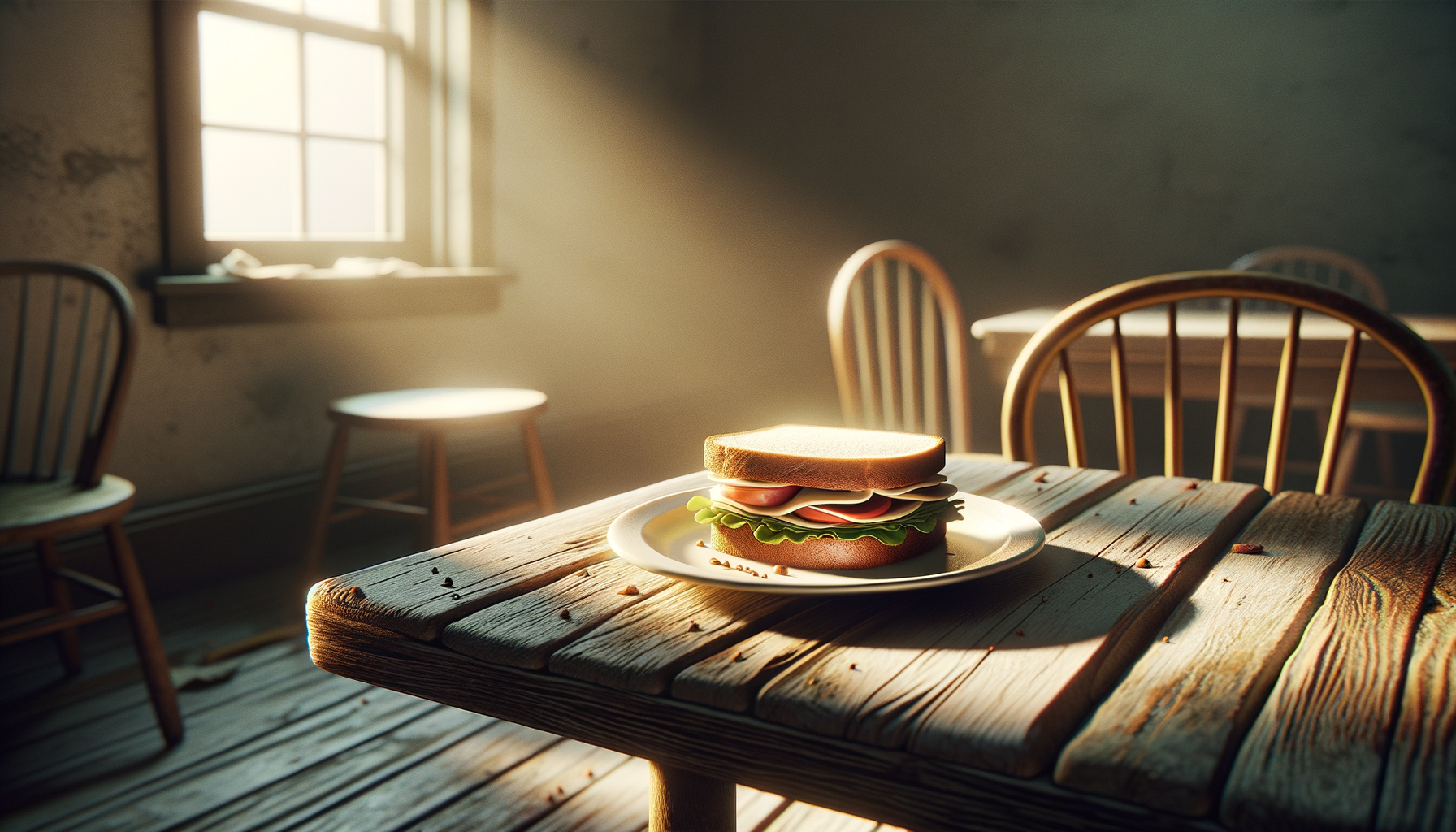The first time I met Sophie, she was wearing electric blue knee-high boots at a gallery opening. This, of course, was the very same gallery where I worked and had meticulously curated an exhibit on Futurism. The theme was all monochrome minimalism, but Sophie breezed in like color theory personified. Her hair was piled into a gravity-defying bun, sunglasses perched on her head (indoors, naturally), and an infectious laugh that could have rivaled a Nina Simone scat riff. She grabbed a flute of prosecco and, before I could say, “No touching the installations,” she marched straight up to me and declared, “I’m here for the art. Where’s the drama?”
With that single sentence, she became the friend who quite literally changed my life.
The Duct Tape Friend: How Sophie Saved Me from Myself
I’ll explain this title—it’ll make sense, I promise. Sophie quickly became my plus-one to every gallery event, private dinner, and ill-advised pop-up exhibit in Bushwick (if you’ve ever seen someone project a video of melting ice cream onto a brick wall while calling it "Late Capitalist Decay," you understand). Unlike me, who was raised steeped in the precious aroma of old-world refinement and Edith Wharton-level decorum, Sophie was unfiltered chaos—in the best way. She wasn’t interested in being flawless for the sake of appearances; Sophie was duct tape: brash, multitasking, functional, and very, very necessary when your carefully polished life starts to crack.
One memorable night, I remember lamenting over a breakup that could have been cut and pasted from a bad novel. The guy—I’ll call him Casper because he ghosted before that term was in vogue—had promised to take me to Umbria that summer. Instead, he disappeared, along with my carefully cultivated plans of drinking sangiovese in olive orchards and gazing at frescoes. As I started brainstorming increasingly melodramatic revenge scenarios (“Do you think I could ship him my leftover library books with bitterly underlined passages?”), Sophie stopped me mid-rant.
“Um, no. Let’s stick a Post-it on this man’s forehead that reads, ‘Not worth artichoke bruschetta at 2 a.m.’ And we’ll never speak of him again. Cool? Good.”
I laughed for the first time in what felt like weeks. Sophie didn’t just help me get over my breakup; she taught me the art of humor as triage.
The Art of Saying No (and Loving It)
Sophie had an uncanny knack for knowing when I needed her most. As someone who grew up tiptoeing through rooms filled with Impressionist paintings (and just as many silent societal expectations), I was, at my worst, an over-committer. Want me to help with a fundraising dinner and proofread your MFA thesis? Sure. Feel free to bring me in as backup for a debate about why neutrals are a personality? Have at it. Sophie, on the other hand, lived by a refreshing mantra: “If it’s not a hard yes, it’s a hard no.”
One Saturday afternoon when I had overbooked myself into oblivion—a brunch networking event, followed by a jaunt to the Met with a colleague, topped off with a dinner with someone who “kinda knew someone at Vogue”—Sophie intervened. She arrived at my place, surveyed my frazzled face, and handed me the most beautiful object I’d ever seen: a single ticket to an opera at Carnegie Hall. The message was simple: go alone, take a breath, and say no to everything else.
That evening, I sat in the dark listening to Puccini, crying happy tears between the haunting notes of “O mio babbino caro.” Sophie had gifted me a reminder that solitude isn’t selfish—it’s necessary. From that day on, I started practicing “the soft no,” a skill that’s just as life-changing as learning how to properly open a bottle of champagne.
Champagne Isn't Always Celebration—and That’s Okay
Speaking of champagne, the night Sophie met Jacques still feels like a vivid indie film scene. Jacques was (and is) one of my best friends, though Sophie decided immediately that he was “Wes Anderson charming with a hint of heartbreak.” While she adored a good meet-cute, life reminded her that not all friendships or flings are destined to look like the ending of a rom-com.
Together, Jacques and Sophie helped me navigate one of the most surprising challenges of adult friendship: romantic dissonance. When I was pouring all my energy into unhealthy dating patterns—prioritizing men who couldn’t tell the difference between Vermeer and van Gogh (not a dealbreaker, but it’s the vibes, you know?)—these two sat me down for what can only be described as The Intervention of 2017. Sophie brought over tiramisu, Jacques uncorked a Bordeaux, and they gave me the pep talk I didn’t know I needed. I still have sticky notes from that night, including the now infamous, “There’s nothing wrong with being single—it’s just being available to yourself.”
What Sophie Taught Me About Love (Spoiler: It’s Not What You Think It Is)
The biggest lesson Sophie taught me wasn’t about romantic love at all—it was about friendship as an art form. And I don’t mean friendship in that syrupy, Instagram-caption kind of way. Real friendship—the Sophie kind—is enduring, occasionally messy, and refreshingly vulnerable.
I think we underestimate how much we need friendships like this. In a culture where every romantic failure feels narrated by Taylor Swift’s breakup anthems (and trust me, I love them), we forget that platonic connections are equally transformative. When relationships feel fleeting or unbalanced, friends like Sophie are your ballast. They keep you afloat with honesty, support, and energy that rivals a Villanelle monologue.
Here’s the kicker: Sophie is no longer in my daily life. She moved to Tokyo a few years ago (a fact I was bitter about for approximately three months). We text occasionally and swap Christmas cards, but she no longer parachutes into my life with bold declarations or unsolicited theater tickets. And you know what? Her impact is just as loud now as it was back then, echoing through everything she taught me.
Takeaways from the Sophie Principle
If you’ve read this far and are asking, “Okay, Veronica, what’s in this beautiful little friendship memoir for me?”—I hear you. So here’s a quick cheat sheet of the Sophie Principle for those moments when you’re searching for a Sophie of your own—or trying to embody one yourself:
- Be Duct Tape: Reliable, a little edgy, and blunt enough to call someone out when they need to hear it. Friends don’t need to look perfect, just useful and warm.
- Say No More Often: Sophie taught me that when life starts spinning off-kilter, recalibration usually starts with a little solitude and selective scheduling. Try it.
- Throw Out the Perfect Narrative: Not every breakup needs villainy plotted to Adele songs; sometimes, life is just about calling it a day without the drama.
- Friendship > Flings: Cultivate your platonic connections just as carefully as you do romantic ones. They can sometimes build a sturdier foundation.
- Find Color in Monochrome: Life’s too short for electric-white walls and stiff expectations. Bring people into your life who remind you to play.
I have often wondered if Sophie knows how much she changed me. In her absence, I’ve had to become my own chaos-bringer, my own source of hard laughs and harder truths. But that’s the beauty of a “Sophie.” A good friend doesn’t just walk with you through a particular season of your life—they leave you a roadmap for navigating the next season on your own. And that, perhaps, is the best kind of artistry one person can offer another.




















